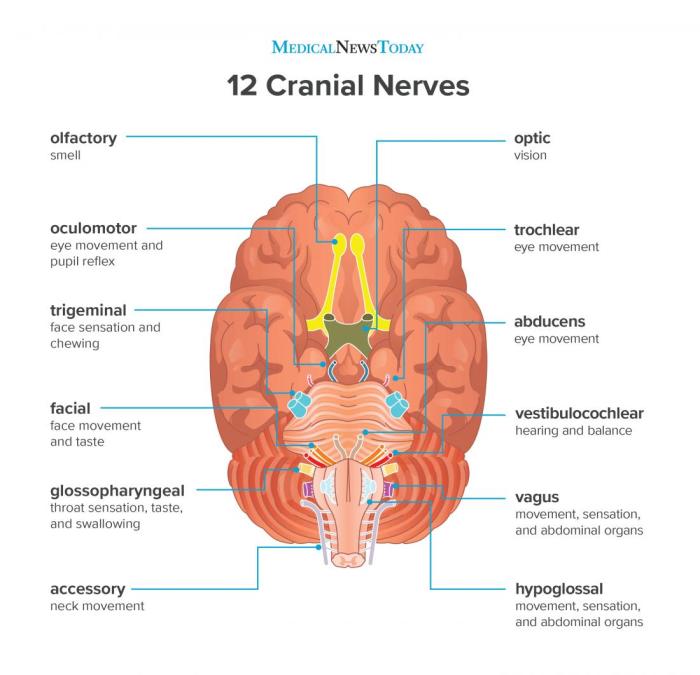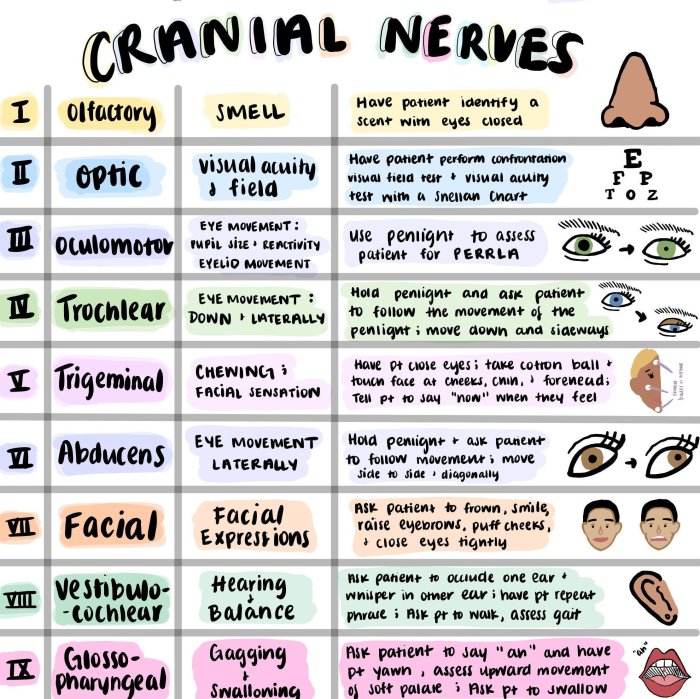Of the following choose the false statement about cranial nerves – In the realm of neuroanatomy, the topic of cranial nerves holds great significance, demanding a comprehensive understanding of their intricate functions and complex anatomy. However, amidst the wealth of information, misconceptions can arise, obscuring the true nature of these vital structures.
This discourse aims to shed light on the inaccuracies surrounding cranial nerves, enabling a deeper comprehension of their fundamental role in maintaining optimal neurological health.
The ensuing paragraphs will delve into the defining characteristics of cranial nerves, meticulously examining their functions and anatomical pathways. Furthermore, we will engage in a critical analysis of common false statements, providing irrefutable evidence to debunk these misconceptions and establish a foundation of accurate knowledge.
Cranial Nerves: Of The Following Choose The False Statement About Cranial Nerves

Cranial nerves are 12 pairs of nerves that originate from the brain and travel through openings in the skull to innervate various structures in the head, neck, and chest.
Each cranial nerve has a specific function, including sensory, motor, or both. They are essential for a wide range of functions, such as vision, hearing, smell, taste, facial movement, and muscle control.
False Statements about Cranial Nerves, Of the following choose the false statement about cranial nerves
One false statement about cranial nerves is that they are all purely sensory nerves.
This statement is false because several cranial nerves have motor functions. For example, the oculomotor nerve (CN III) innervates the muscles that control eye movements, while the facial nerve (CN VII) innervates the muscles of facial expression.
Questions Often Asked
What is the primary function of cranial nerves?
Cranial nerves are responsible for transmitting sensory and motor information between the brain and various structures of the head, neck, and thorax.
How many pairs of cranial nerves are there?
There are 12 pairs of cranial nerves, each with distinct functions and innervation patterns.
Can cranial nerve damage be treated?
Treatment options for cranial nerve disorders vary depending on the underlying cause and the severity of the damage.

